Are you tired of fighting lawn weeds and brown patches every year? Grass type and soil condition directly affect the health of your yard, yet many homeowners miss these key details.
In this guide, we answer clearly: “What is the best lawn care routine?”—giving you seven easy steps to a healthy lawn through mowing tips, watering schedules, pest management, and more.
Your greener yard starts now!
Key Takeaways
Get familiar with your grass type upfront—cool-season lawns, such as Kentucky bluegrass, thrive differently than warm-season lawns like Bermuda grass.
Check your soil every three years for essential nutrients like nitrogen, phosphorus, potassium, and correct pH balance.
Cut only a third of your grass height in one mowing, keeping cool-season types around 3 to 4 inches tall.
Give the lawn one or two inches of water each week, early in the morning, to limit evaporation and fungal issues.
Follow a lawn care routine by season: spring cleanup and fertilizing, regular summer watering, fall overseeding for thicker turf, and adjusting grass height for winter protection.
Table of Contents
Understanding Your Lawn

Your lawn has its own needs based on grass type and soil makeup. A soil test can tell you if your yard has clay, sand, or loam soil, which affects how you should care for it.
Identifying Your Grass Type
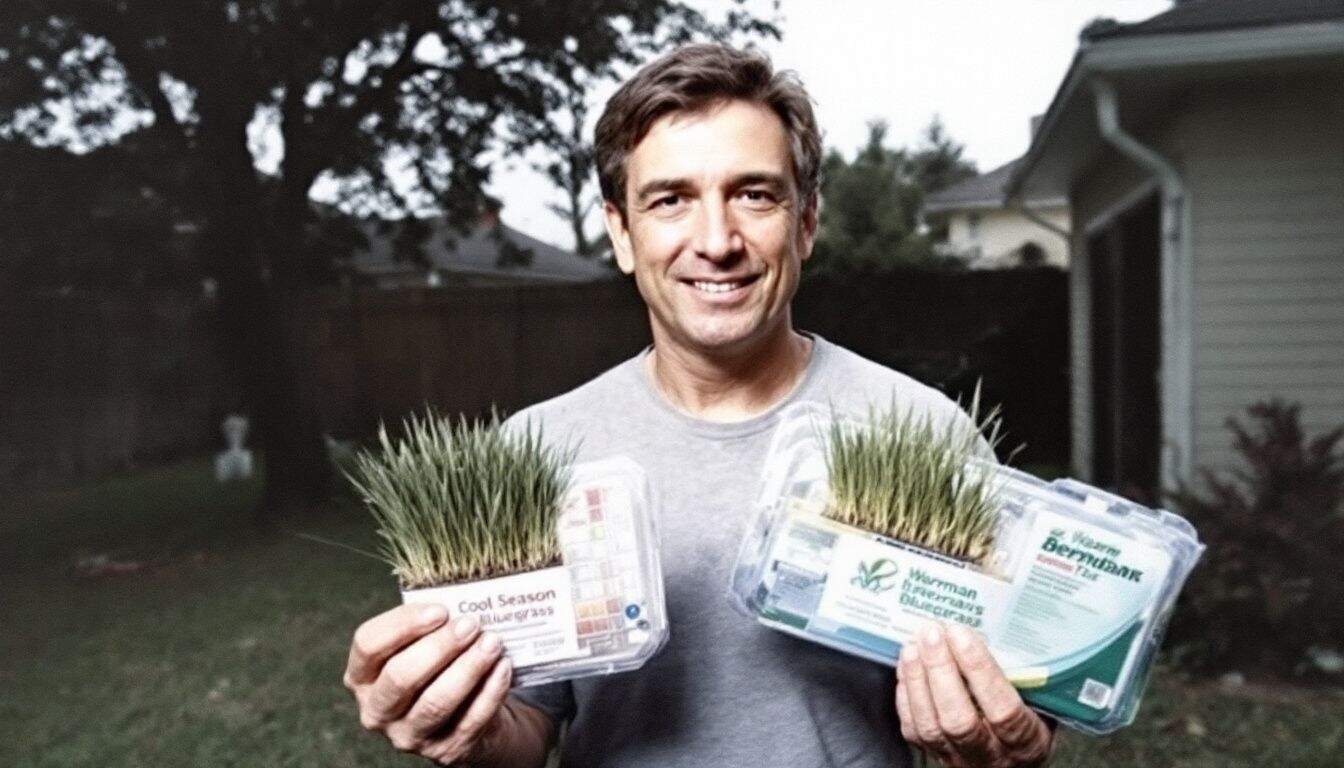
Knowing the grass type in your yard is step one to having a great lawn. Most lawns in the U.S. fall into two categories—cool-season breeds like Kentucky bluegrass and tall fescue, or warm-season varieties like Bermuda grass and Zoysia.
Cool-season grasses grow best up north, showing off rich green colors and thick growth. Warm-season grasses handle southern heat easily, thriving where cooler types might wilt. According to experts at a Cape Coral lawn care service, grass species directly affects mowing height, watering schedules, and overall maintenance.
I found this out through trial and error after relocating from Michigan down to Texas. My old yard-care habits for tall fescue totally failed in the Texas heat! The mowing height that worked for tall fescue—about 2–3 inches—doesn’t work for Bermuda grass, which grows best at 1–2 inches.
After running soil tests, I also saw that my new lawn needed a different soil pH than back in Michigan. Identifying grass type correctly reduces stress, saves money, and cuts down on wasted time in yard maintenance.
The right grass in the right place with the right care makes all the difference between constant struggle and effortless beauty in your yard. – Professional Lawn Care Expert
Assessing Your Soil Quality

Soil testing shows what’s really happening under your lawn. Each test checks pH levels and essential nutrients, both of which directly affect how well your grass grows. Most lawn-care pros recommend getting your soil tested every three years, just to keep an eye on any changes.
Your yard’s soil type matters too—it falls into clay, sandy, silty, or loamy. Each type requires different attention to keep your grass healthy. Clay soil holds water pretty well, but drains slowly.
Sandy soil drains quickly, so it tends to need more frequent watering. Silty soil feels smooth and holds moisture nicely, while loamy soil—a balanced mix of all three—is often best for growing healthy grass.
The perfect lawn soil has a balanced supply of minerals, vitamins, and nutrients like nitrogen, phosphorus, and potassium.
These three nutrients—nitrogen, phosphorus, and potassium—give strength to every healthy lawn. Nitrogen helps your grass grow thick and green, phosphorus encourages root growth, and potassium boosts disease resistance.
Together, they help defend your yard from common pests like grubs and sod webworms and keep diseases away.
Soil compaction also hurts lawn health. Packed-down soil blocks oxygen, water, and nutrients from reaching grass roots. Aeration fixes this by putting small holes in the soil, helping the roots breathe easier.
Timing your fertilizer applications depends mainly on your grass type. Cool-season grasses—such as Kentucky bluegrass—need fertilizer at different times than warm-weather grasses like Bermuda or Zoysia.
Checking how damp your lawn soil is with a moisture meter can stop you from watering too often, keeping roots strong without wasting water. Healthy, balanced soil makes all the difference—you’ll see it in your grass, turning patchy areas into lush green spaces.
Essential Tools for Lawn Care
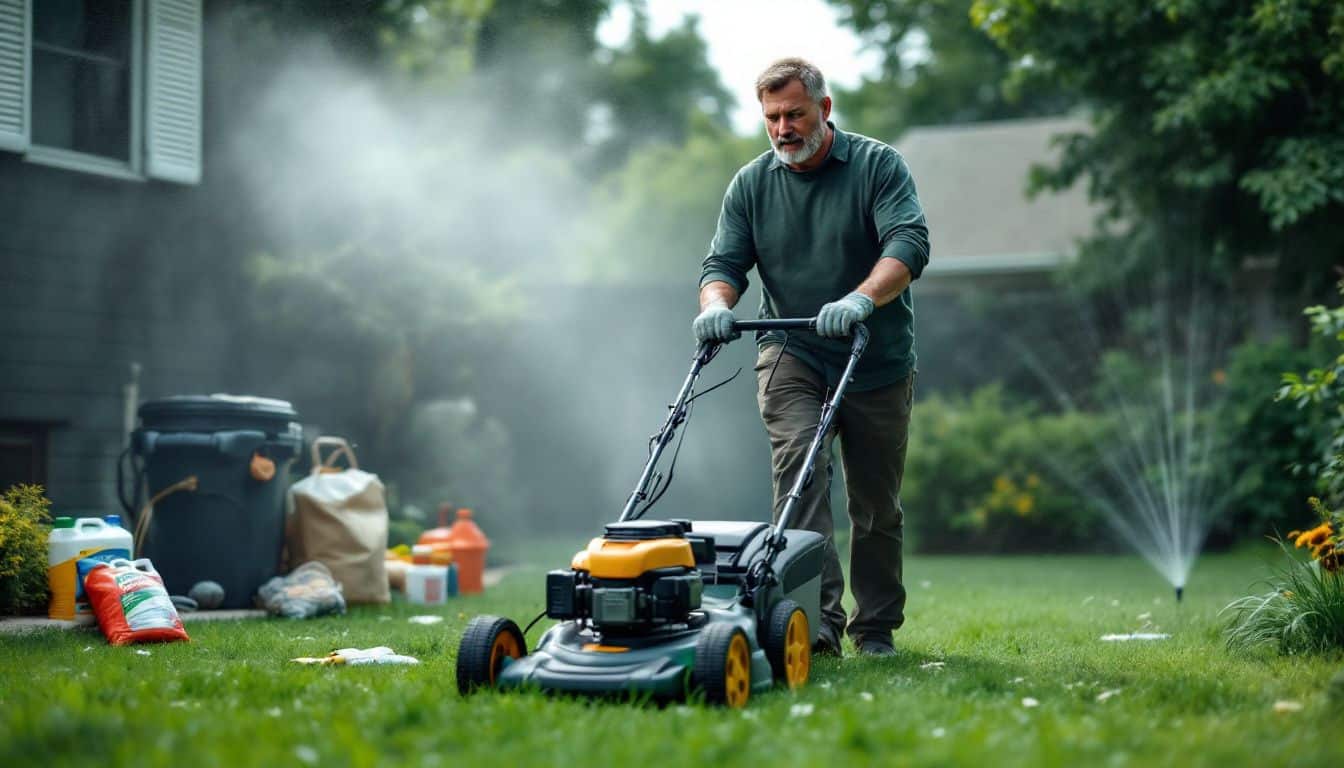
The right lawn tools make all the difference between a good yard and a great one. You’ll need basic equipment like a quality mower and sprinklers, plus some special items for feeding and planting grass.
Mowing Equipment

Your mower is the core tool in yard care. Most guys choose push mowers for small yards, self-propelled for medium, or riding mowers if their property is large. I’ve noticed that keeping my mower in excellent condition saves me stress and gives cleaner grass cuts.
Sharp blades truly help—I sharpen mine once yearly, since dull blades rip grass tips, leaving ugly brown edges.
The right mower doesn’t just cut grass – it builds the foundation for a healthy lawn.
The height you set for mowing matters more than many realize. Keep your mower height around 3.5 inches—this helps shade out annoying weeds and cool grass roots. Don’t clip more than a third of the total grass height at once; it keeps your lawn from getting stressed and damaged.
Many newer mower models have mulching blades, chopping clippings into tiny, fine pieces. These tiny pieces quickly decay and feed your lawn as natural fertilizer, helping you spend less cash on lawn treatments.
Watering Tools

Once you’ve got the perfect mower, watering tools are just as important for a healthy lawn. Smart sprinklers keep grass lush, reaching every spot evenly without wasting water. These sprinklers hook up to timers—you set them once, and they handle watering, even if you’re out of town.
In dry times, good tools can truly save your lawn. A moisture meter removes any guesswork, showing clearly if the soil needs more water or not. Rain barrels can save cash by gathering free rainwater to water your yard later.
For small lawns, a sturdy hose with an adjustable nozzle provides the best flexibility. You easily control spray strength and patterns, soaking the ground evenly without flooding the roots.
Fertilizing and Seeding Supplies
Quality fertilizing gear makes lawn care easy—and hassle-free. You’ll need a reliable spreader to evenly apply granular fertilizer across your yard. Drop spreaders are ideal for smaller spaces, while broadcast spreaders quickly cover large areas.
A soil moisture meter is handy, letting you easily check if the grass needs watering before adding nutrients. For planting grass seed, grab a sturdy rake to loosen the soil, creating solid seed-to-soil contact for better growth.
Many folks prefer having both organic and synthetic fertilizers handy—your choice depends on the type of grass you’re growing. Kentucky bluegrass and tall fescue often respond differently to various fertilizer options.
Another helpful tool is a soil testing kit: check your yard’s pH levels at least every three years.
Timing is just as important as having the right tools. Cool-season grass types usually thrive when fertilized in early May, early September, and late October. Warm-season grasses follow their own schedule, depending on your local climate.
Proper equipment, used correctly, can help avoid problems like root rot, which often comes from applying too much fertilizer. A useful dethatcher clears away dead grass, helping water and nutrient flow.
Keeping your lawn-care tools organized saves time and frustration—so you’re always ready to tackle seasonal yard tasks.
General Lawn Care Tips
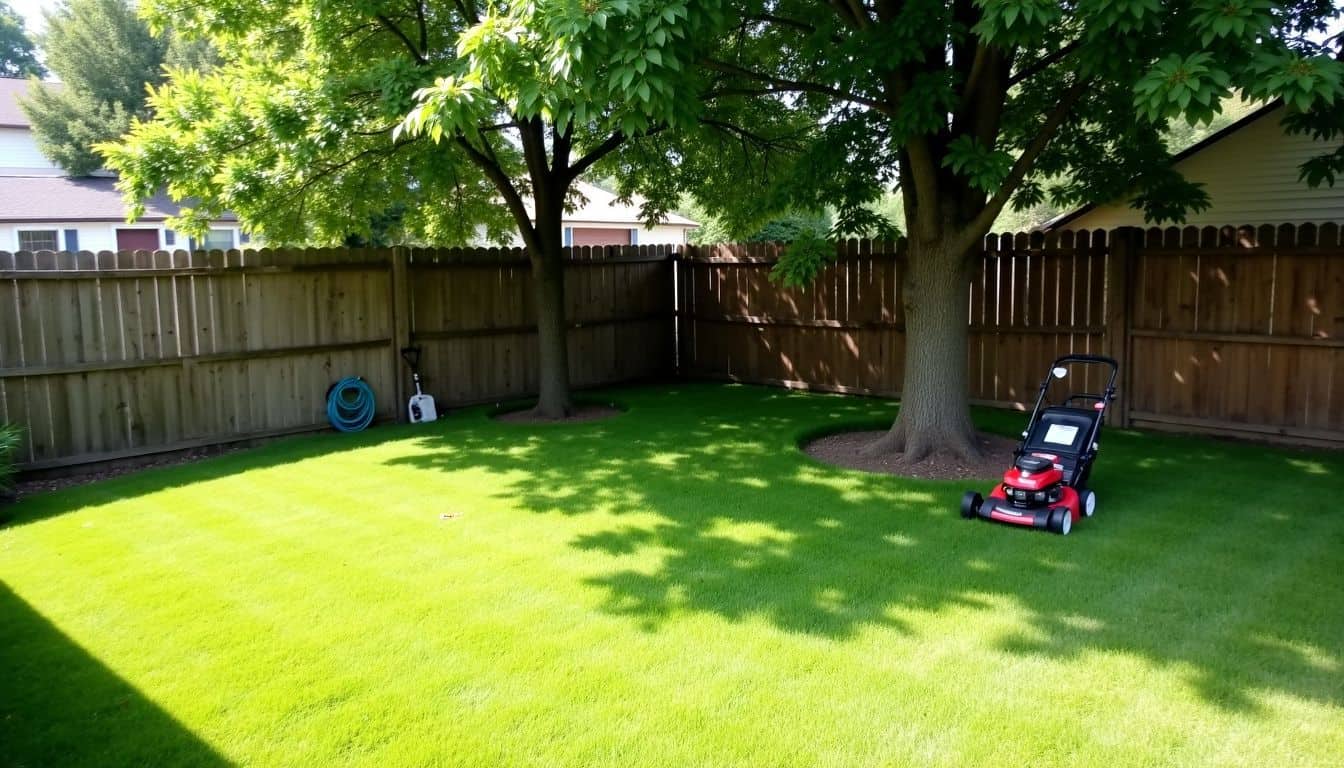
Good lawn care habits make all the difference between an average yard and a showstopper. These simple tips form the backbone of basic lawn maintenance that keeps your grass green and healthy year-round.
Maintain an Adequate Grass Height
Cutting your grass to the proper height is crucial for keeping your lawn healthy and green. Cool-season types—like Kentucky bluegrass or tall fescue—do best around 3 to 4 inches tall.
For warm-season varieties, such as Bermuda grass, keep them shorter—around 1 to 2 inches is ideal. Personally, I stick to the one-third rule, meaning I never trim more than one-third of the grass blade at once.
My neighbor skipped this tip, and his lawn—shallow-rooted and stressed—couldn’t survive the summer heat.
The height of your grass determines the depth of your roots. Mow too short and you’re cutting your lawn’s lifeline.
Sharp mower blades give a clean cut, helping your grass recover faster and healthier. Dull blades tear and bruise the grass, opening the door to pests and diseases. Grass that’s too long attracts bugs and encourages fungus growth—plus it’s messy.
On the other hand, overly short grass struggles with photosynthesis, losing its ability to feed itself properly. Some guys scalp their lawns hoping they’ll mow less often, but cutting grass too low weakens roots and causes bigger problems later.
Set a Regular Watering Schedule
Your lawn typically needs about 1 to 2 inches of water weekly to stay lush and vibrant. Watering early in the morning is best—cooler temperatures mean less evaporation, so moisture seeps deeper into the roots.
Giving your lawn a thorough soak less often encourages grass to push roots further underground. This approach strengthens your grass, helping it withstand dry periods with less trouble.
Avoid watering in the evening, because damp grass overnight can invite fungus growth and disease.
An effective sprinkler system simplifies lawn maintenance considerably. A handy tool like a soil moisture meter quickly tells you if your grass needs watering. Avoid irrigation during hot afternoon hours, since too much water evaporates under intense sunlight.
Cool-season grasses, such as Kentucky bluegrass and tall fescue, might require extra care during summertime heat spells. Keep an eye on rainfall amounts and the weather forecast, adjusting your watering to protect your lawn from drying out or becoming waterlogged.
Avoid Overfeeding Your Lawn
Applying too much fertilizer actually causes more harm than good to your lawn. Guys often assume extra fertilizer means greener grass—but the truth is, excess nitrogen only creates weak growth and shallow roots.
Keep it simple: use about one pound of nitrogen for every 1,000 square feet at each feeding. Most lawns do well with just two to four fertilizer treatments per year. This routine gives grass exactly the nutrition it requires, without forcing excess growth.
Overfed lawns quickly become easy prey for pests and diseases, including common issues like root rot. Grass that grows too quickly won’t have the strength needed to resist these problems naturally.
Good lawn care begins with knowing exactly what your soil needs. Start with a soil test before buying any products—it will reveal your soil’s acidity level and what nutrients fit your particular grass.
Taking this small step saves money, cuts down on extra products, and promotes healthy, vibrant grass that stays strong.
Leave Grass Clippings on the Lawn
Ditch bagging those grass clippings—your lawn needs them, not your garbage bin. Grass clippings work like free, natural fertilizer, providing up to 25% of your yard’s annual nitrogen requirements.
Keeping clippings scattered on your turf cuts back yard chores, while also nourishing your soil. They break down quickly, keeping the ground cool and moist, even on scorching days.
The best fertilizer for your lawn is already growing on it.
Many folks assume a clean-looking lawn needs cleared-off clippings, but that’s wasting valuable nutrients. Grass pieces left behind help shade weed seeds from sunlight, reducing future weed growth and saving you hassle.
A mower fitted with a mulching blade easily chops grass into smaller bits—perfect for returning nutrients right back into your lawn. This handy lawn tip saves your time, conserves cash, and gives you thicker, greener grass without extra effort.
Dealing with Common Lawn Problems
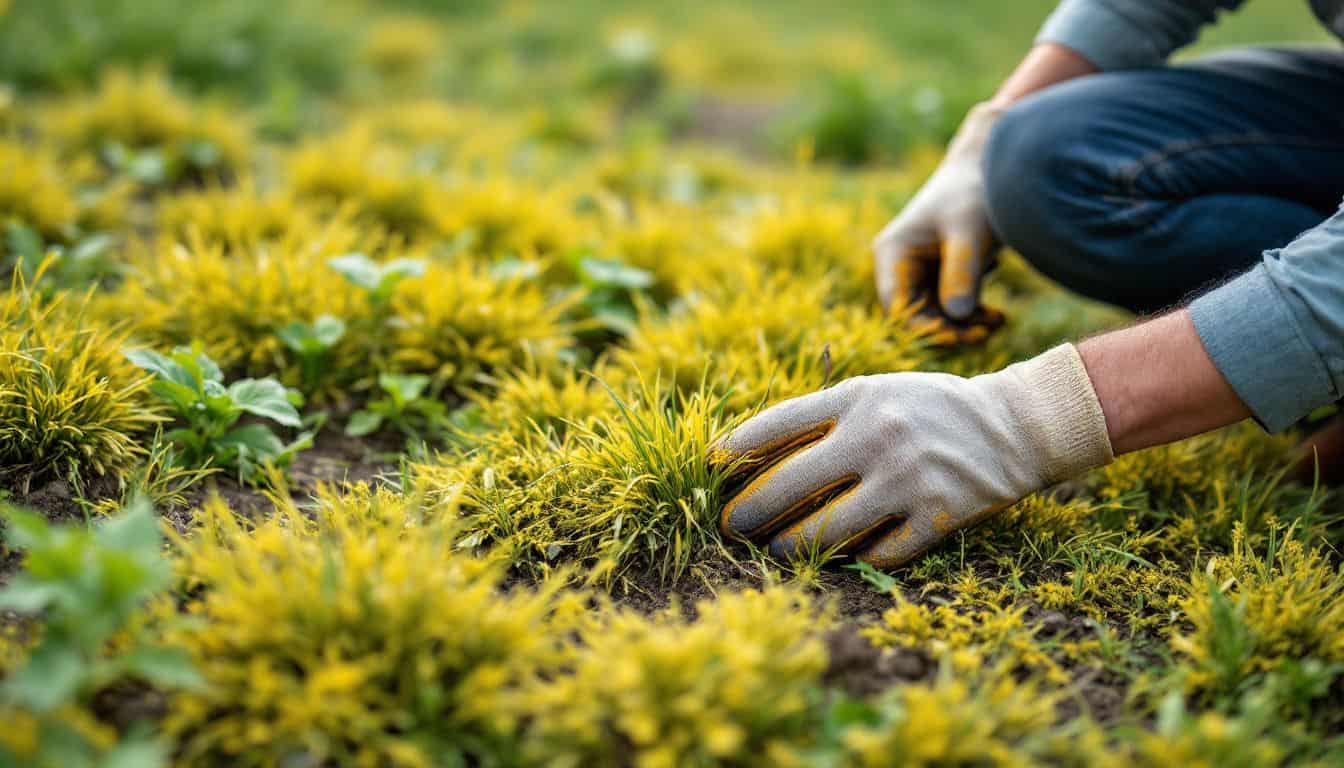
Even the best lawns face threats from weeds, bugs, and plant sickness. You can tackle these issues with the right tools and know-how before they ruin your green carpet.
Weed Control
Weeds drain nutrients from your lawn and crowd out healthy grass. These pesky plants typically fall into three groups: broadleaf weeds, grassy weeds, and grass-like weeds. If weeds pop up here and there, just yank them out by hand.
For bigger patches, herbicides are the way to go. Prevention is your strongest ally—leave grass clippings on your yard as natural mulch, and try spreading corn gluten meal to block new weeds.
Late summer is the best opportunity to tackle weeds. Apply a post-emergent herbicide from late August to early September, stopping summertime weeds before they spread seeds. Your lawn needs breathing room, too.
Aeration punches small holes into the ground, letting water and oxygen flow freely. Dethatching removes old grass layers from the surface. Both steps help the grass soak up more nutrients—making it tougher for weeds to take root.
Pest Management
Beyond weeds, your lawn faces another enemy—bugs that snack on grass. Lawn grubs and sod webworms love feeding on your yard, chewing roots and leaves, and leaving ugly, brown patches behind.
A weekly mowing routine helps you spot trouble early; look for dead areas, insect activity, or grass blades that seem chewed or ragged.
If the bugs aren’t too bad, grass clippings left after mowing can help. They encourage helpful insects to move in, which naturally control unwanted bugs. Water your lawn deeply—stronger roots can handle bugs better.
In cases of severe infestation, you might have to apply spot treatments or get help from a lawn care professional. After treating bug damage, spread new grass seed in bare spots to keep your lawn green and thick.
Addressing Lawn Diseases
Fungi cause most lawn diseases, turning healthy grass yellow or causing ugly brown patches around your yard. These problems spread quickly—but you can tackle them effectively with basic lawn care steps.
Keep your grass at the correct height for its type, whether that’s Kentucky bluegrass or tall fescue. Clear away any dead grass or debris regularly, since fungi love to grow in damp, cluttered areas.
Aerate your soil now and then, too, so water drains smoothly and fungi can’t easily settle in.
Some folks skip these simple steps and rush straight for chemical fungicides—but save those for emergencies only, after the basic methods fail. Your first line of defense against fungal trouble is proper lawn upkeep.
Good mowing habits, regular cleanup, and decent soil drainage all help protect your grass from lawn diseases.
Your lawn care routine naturally shifts from season to season, and having a handle on these changes helps you stay ahead of fungal issues all year long.
Seasonal Lawn Care Routine
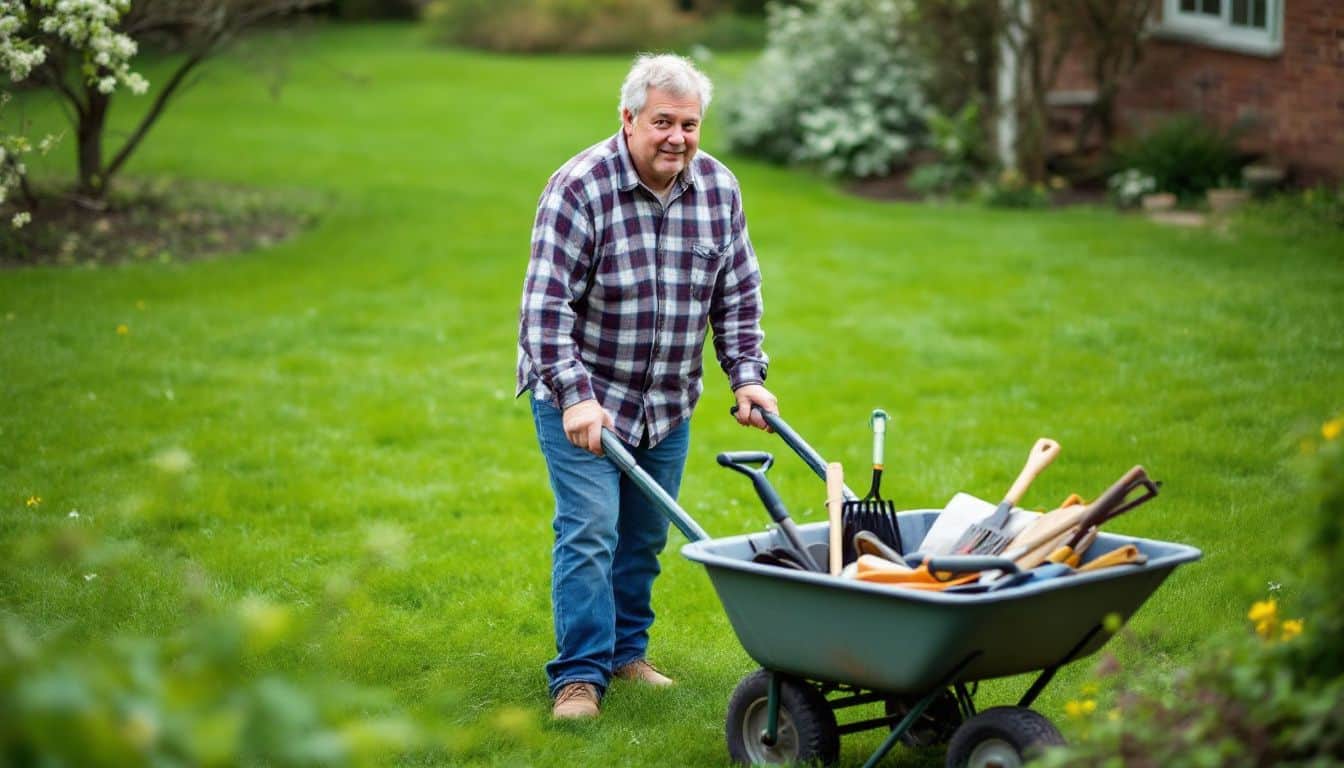
Your lawn needs change with the seasons, and your care routine should too. Each season brings its own tasks to keep your grass green and healthy all year round.
Spring: Cleaning, Aeration, and Fertilization
Spring is an ideal season for giving lawns a fresh boost. Start by clearing away fallen leaves, twigs, and winter debris. This simple cleanup prevents pests from settling in your yard and helps new grass grow stronger.
Next, aerate your lawn—punching tiny holes in the soil improves airflow and helps water seep deep into grass roots.
Cool-season grasses, such as Kentucky bluegrass and tall fescue, thrive with fertilizer each spring. Apply about 1 pound of nitrogen per 1,000 square feet to encourage lush, healthy growth.
Warm-season grasses need even more attention. Fertilize twice: once in late March, and again around early May. Also, spread pre-emergent weed control by mid-March to stop unwanted weeds before they sprout.
Grass clippings left after mowing can even provide up to a quarter of the nitrogen your lawn needs each year—a free fertilizer straight from nature.
Summer: Consistent Watering and Mowing
Your lawn needs extra care in summer. During hot weather, grass typically requires about 1–2 inches of water each week. I water early, before 9 AM, to limit evaporation and reduce chances of fungal growth.
Watering at this hour allows the grass blades to dry properly by the afternoon. Kentucky bluegrass, for example, does best with deep watering every few days instead of quick daily sessions.
This method encourages the roots to stretch deeper into the soil, making your lawn tougher in dry spells.
Mowing height plays a big role in keeping your grass healthy through summer. For my lawn, I set the mower blade around 3.5 inches. The extra height helps grass recover quickly from the heat and reduces weed invasion.
Longer grass blades also create shade, which holds moisture in the soil better. Use sharp mower blades—clean cuts heal fast and keep your lawn tidy. Grass clippings left on the turf serve as natural fertilizer.
They break down quickly, feeding valuable nutrients back into the ground. If you’re considering a backyard wedding, these simple lawn tips can help your grass look amazing for the event.
Fall: Overseeding, Aeration, and Fertilizer
Fall is the ideal time to refresh your lawn. From mid-August through mid-September, overseeding gives grass thicker coverage and deeper roots. Core aeration during this same period loosens compact soil, letting nutrients, air, and moisture soak deep into your lawn’s root zone.
Give your soil two rounds of fertilizer—first in early September, then a high-nitrogen feeding around late October or early November. This helps grass survive winter’s chill and thrive again come spring.
Autumn weed control matters too. Post-emergent herbicides tackle tough weeds effectively before cold weather settles in. Before choosing herbicide products, check your soil’s pH and decide which type suits your grass best—Kentucky bluegrass, tall fescue, or perennial ryegrass.
Also remember to clear fallen leaves, twigs, and debris. Applying organic mulch protects sensitive lawn areas from snow mold and harsh winter frost. To boost your lawn even more, consider trying some advanced care methods next.
Winter: Lawn Winterization Practices
Once you’ve fertilized and aerated in autumn, it’s time to prep your lawn for winter. First, clear off leaves, sticks, and other yard debris. Make sure your lawn is cut to about 2–3 inches tall before frost sets in.
At this height, grass crowns stay protected, and shorter blades won’t trap moisture that can cause disease.
Dormant lawns need extra care through cold months. Before soils fully freeze, apply a winter-specific fertilizer to build stronger roots. Also, avoid too much foot traffic; stepping on frozen blades can snap and harm them.
If your paths get icy, stick to sand instead of salt—salt can burn grass at pathway edges. Winter is a good time for lawn gear maintenance too; clean off your mower, sharpen its blades, and oil any moving parts.
Checking soil quality every three years will show you the pH levels clearly, helping you adjust care routines for next spring.
Advanced Lawn Care Techniques
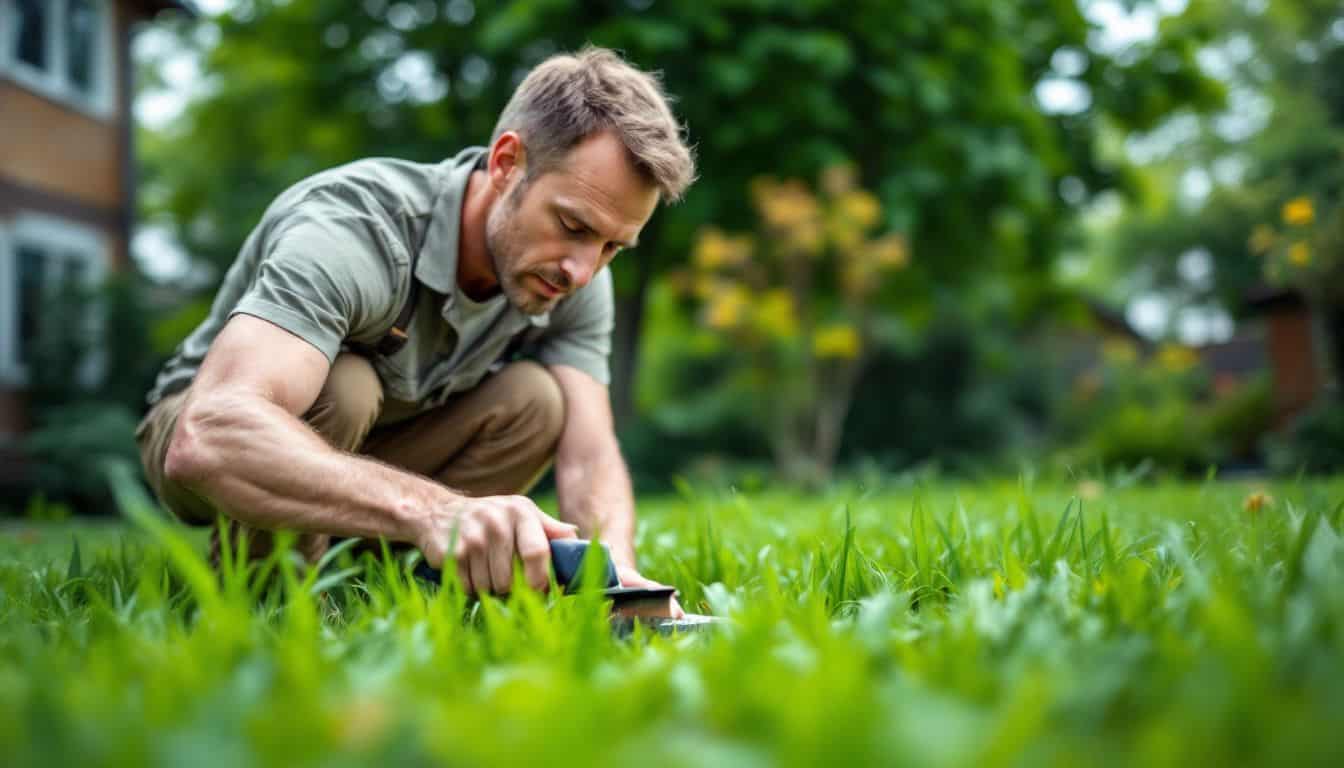
Take your yard to the next level with these expert methods. Your grass will thank you for these special care steps that fix deep problems and create a carpet-like lawn.
Aeration for Soil Health
Your grass needs fresh air, just like we do. When soil gets tightly packed, it stops water, air, and nutrients from reaching grass roots. My lawn taught me this lesson firsthand—after weeks of steady watering, it still looked patchy and weak.
Core aeration fixed that by pulling tiny plugs of dirt out of the ground. It sounds simple but helps tremendously. Aeration lets roots stretch, grow deeper, and feed better.
Fall is perfect for core aeration, especially if your lawn has cool-season grasses, like Kentucky bluegrass or tall fescue. Before getting started, use the easy screwdriver test to check if the soil needs aeration.
Press the screwdriver into your grass—difficulty pushing it in means your lawn has compacted soil. After testing, set aside time to aerate about two weeks before fertilizing or reseeding.
This helps keep the soil loose and open, giving new grass seeds a better shot at growing strong.
For lawns sitting on heavy clay soil, or areas that often get walked on, yearly aeration can truly transform them. After I started aerating every year, my own grass grew healthier, thicker, and filled in bare patches beautifully.
Even in heavily used spots, steady aeration can bring your lawn back to life.
Dethatching for Better Growth
Dead grass and lawn debris form a thick layer called thatch, blocking water from reaching grass roots. Removing this buildup through dethatching clears the way, letting your lawn soak in moisture—and breathe freely once again.
For Kentucky bluegrass and tall fescue, the ideal times to dethatch are early spring or early fall. But for warm-season grasses, late spring timing is just right. Convenient timing makes a huge difference in your lawn’s health.
Choosing the right tool matters, too. Smaller yards usually do fine with a simple dethatching rake. Larger lawns, though, benefit greatly from powered options—electric or gas-powered dethatchers or vertical mowers—since they reach deeper into the turf.
Dethatching does more for your lawn than simply improving water flow. It also allows better air circulation around grass roots and helps fertilizer penetrate deeper into the ground.
Plus, it’s most effective as one part of an overall lawn care routine. Proper mowing height, smart watering habits, and regular soil tests all help keep grass healthy. Checking soil moisture with a simple moisture meter also helps identify dry spots after dethatching.
Most lawns only require dethatching if the thatch layer exceeds half an inch thick.
Overseeding for a Thicker Lawn
Overseeding your lawn helps grass grow thicker and keeps weeds at bay naturally. The ideal window for overseeding runs from mid-August through mid-September. Knowing the type of grass in your yard matters—it shapes your choice of seed, whether it’s tall fescue or Kentucky bluegrass.
Before spreading seeds, clear any sticks, soil clumps, or debris from the surface. A broadcast spreader works great—it evenly scatters grass seed across your lawn with minimal effort.
Core aeration works best right before spreading seeds. Aeration punches small holes into the soil, helping to loosen compact dirt and give grass roots space to spread deeper and stronger.
I tried pairing aeration and overseeding last fall, and my lawn’s appearance improved dramatically. After planting, water lightly and often enough to keep the ground damp but not soaked—this prevents seeds from washing away.
Include these simple practices each year to keep your yard thick, green, and healthy—the type of lawn your neighbors will envy.
Eco-Friendly Lawn Care Practices

Green lawn care cuts down on water waste and helps our planet. Smart sprinklers and rain barrels save water while organic options keep your grass safe from harmful chemicals.
Reducing Water Waste
Using water wisely saves you money and makes lawn care simple. Last summer, I switched to drought-tolerant grass and lowered my water bills by 30%. You can even set out barrels to catch rainwater, which helps keep your lawn healthy during dry periods.
Doing this small step cut my city water use and kept the grass lush into late August. Aim to water deeply but less frequently—about 1 to 1.5 inches weekly—and measure easily with an empty tuna can.
Deep watering promotes better roots and stronger grass growth.
Installing timers and rain sensors makes lawn watering easier. Last year, I put in a basic timer for around $50, and thanks to lower water use, it covered its expense in three months.
Mow your lawn at the proper height, too, about three inches tall for most cool-season grasses. Slightly taller grass blades shade soil better, which slows moisture loss. Pest control also helps, since insects like grubs or sod webworms hurt grass roots, often forcing extra watering.
Healthy lawns naturally stay lush and vibrant without constant watering.
Using Organic Fertilizers
Organic fertilizers give your lawn the exact nutrients it needs for healthy, lush growth. Grass depends on nitrogen for vibrant green leaves, phosphorus to build sturdy roots, and potassium to resist disease.
Last year, I switched to organic products—within a few months, my lawn had fewer weeds and healthier turf. Natural fertilizers slowly break down over time, steadily feeding your lawn instead of dumping nutrients all at once, like chemical types often do.
Your type of grass helps you figure out the best time to fertilize. Cool-season grasses, such as Kentucky bluegrass, do best with applications in fall and spring. For warm-season grass, mid-spring through summer applications give you the healthiest results.
First, grab a soil test kit—it tells you your soil’s pH and exactly what nutrients might be missing. This simple test saves you cash and helps you avoid fertilizer runoff, protecting nearby lakes and streams.
How Will Lawn Care Evolve in 2025?
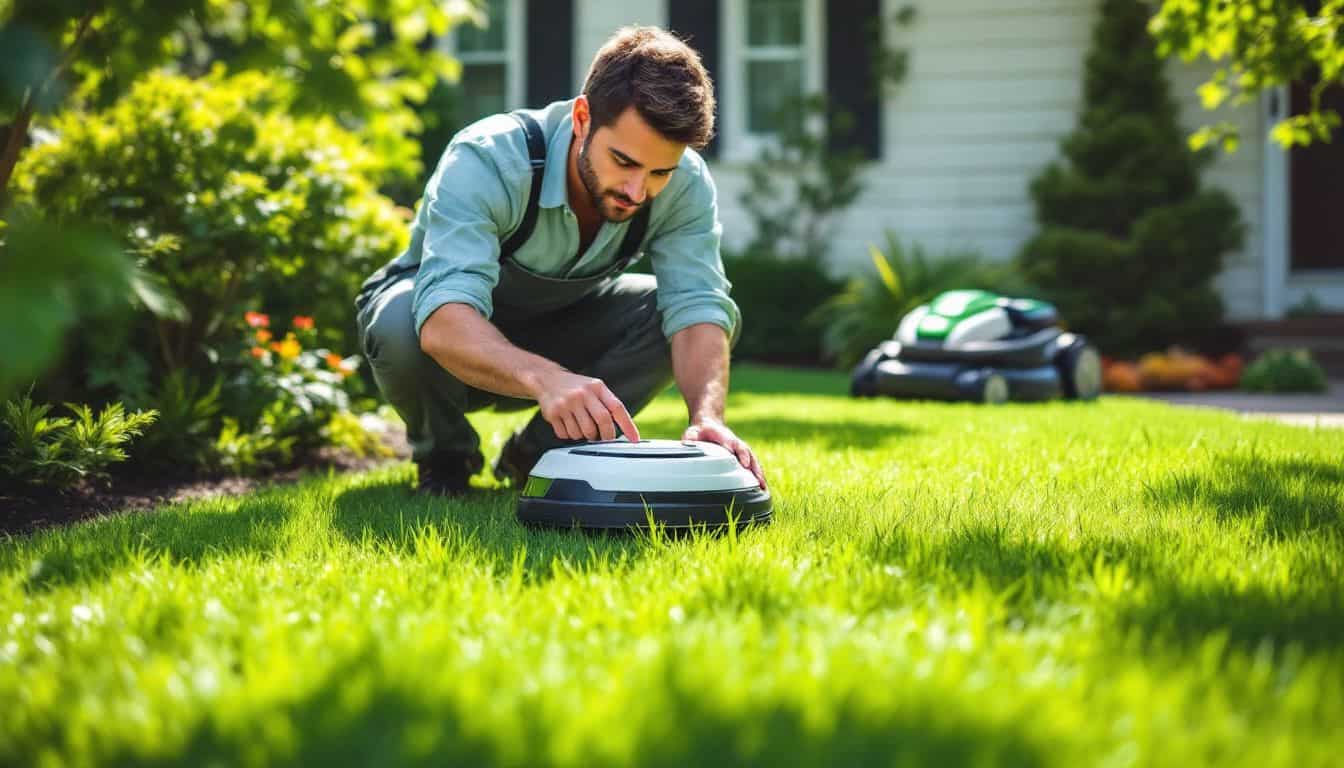
In 2025, lawn care will focus heavily on soil quality and choosing the right type of grass. Experts say more homeowners will test their soil’s pH levels and texture before selecting grass varieties.
This helps decide if cool-season grasses, like Kentucky bluegrass, or warm-season options work best for their yard.
Smart irrigation systems will also become the norm, keeping your lawn green while saving water. These systems measure soil moisture and check local weather forecasts, watering your lawn only as needed.
Robotic mowers will continue growing in popularity—these devices automatically trim your grass at perfect heights, without any effort from you. Still, many folks will continue to tip your landscaper for tougher jobs like aeration and overseeding, which boost root health and reduce soil compaction.
New fertilizer products and weed control methods will arrive, making lawn care simpler and kinder to the environment. Chemical products will get safer and better, but fertilizers made from natural materials will see the most growth overall.
Tougher, drought-resistant grass types will also become widespread, because conserving water will become critical.
Technology will step up further, too, with useful apps to quickly identify lawn diseases and suggest solutions. Some advanced apps will even build personalized lawn-care schedules for your grass type, climate, and local growing seasons.
In short, the ideal 2025 lawn will blend technology, a better knowledge of soil quality, and smart water usage for healthy grass with minimal environmental harm.
People Also Ask
How often should I mow my lawn for best results?
Mow your lawn around once a week during the active growing months. For cooler season grasses such as Kentucky bluegrass or tall fescue, aim for a mowing height between 2.5 and 3.5 inches. Warm-season types tolerate shorter mowing heights—but never cut more than one-third off the grass blades at once.
What’s the ideal watering schedule for a healthy lawn?
Lawns generally thrive with about 1 to 1.5 inches of water each week. Water deeply but less often, as this encourages stronger roots. Check moisture with a simple soil moisture meter instead of following a set watering calendar.
What is the best time to fertilize my lawn?
Fertilizing in spring usually gives the best outcome for most grass types. First, test your soil to find out the right amount of fertilizer needed—especially for sandy clay or clay loam soils. Then, apply a liquid or granular fertilizer suited for your specific grass and soil conditions.
How do I handle pests in my lawn?
Keep an eye out for lawn grubs, sod webworms, or Japanese beetles, which can damage grass. Good lawn care practices help stop pests before they start. If pests still become a problem, choose targeted treatments rather than broad, general pesticides that risk harming beneficial insects too.
Is aerating my lawn really necessary?
Definitely! Aeration helps loosen compacted soil, allowing nutrients, water, and air to get down to the roots. Lawns with clay soil usually need aeration at least once a year. This simple routine can greatly boost your lawn’s health and appearance.
How can I keep my lawn disease-free?
Keep diseases away by carefully managing watering—too much moisture encourages problems like leaf spot to form. Water early in the morning so grass dries out throughout the day. Maintain proper mowing height, and leave some grass clippings behind—they work as a natural nutrient boost for your soil.

